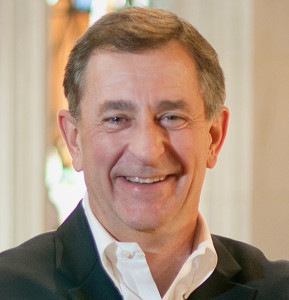I hear it in breathless conversations with ministers in multiple settings:
- “I’m exhausted. How can I be this tired when most of what I do is talk on the phone or to a screen?”
- “I’m running out of ideas about what to do next. Can you help me?”
- “Where did my motivation go? Am I still cut out to be a minister?”
- “Our team is at low ebb; we’ve lost our connection to each other and to our congregation.”
COVID fatigue is real. In addition to the lingering symptoms many victims of the virus report, there is a more pervasive fatigue that seems to be impacting nearly every profession in our culture. My friend and colleague Steve Scoggin of Wake Forest Baptist Medical Center has created a 20-minute presentation on the phenomena of COVID fatigue in the workplace.

Bill Wilson
He has presented his thoughts to dozens of audiences and now is being inundated by requests from others across the country to share his thoughts. The response in the medical community, and beyond, indicates the widespread and debilitating impact that fatigue and exhaustion are having on us.
Congregational life, especially, seems to be impacted by multiple forces as we enter 2021. The fatigue factor is exacerbated by the partisan political culture that infects our shared life with divisiveness, hostility, low trust and broken relationships. The disruption to our social gatherings, education opportunities, family visitation and normal patterns of personal engagement leave us unmoored, unmotivated and too often depressed.
This reality is hard for most ministers. We are wired to rush in when things are hard and to provide leadership and a strategy for resolution. COVID has changed the rules of engagement for us, and some of our best tools for managing a crisis are no longer available.
One pastor friend put it this way: “Much of my frustration comes from the fact that the things I love most about the ministry, such as visiting and engaging with people in times of need and celebration, I can no longer do. Instead, the things I enjoy least about ministry: the technical, operational and minutia of institutional life, are what I am doing twice as much of. Doing a funeral for a significant member of the church for a small gathering of 10 family members who are masked and distant, and not being able to hug the widow of 60 years of marriage is heartbreaking.”
Thankfully, there is hope on the horizon with the arrival of vaccines and the possibility of some sense of normalcy returning to our collective life later this year. And yet, I am concerned that our ministers and churches will find that the fantasy of a “return to normal” is just that. My fear is that something fundamental about our faith life has shifted and changed and will require an ongoing resilience to manage and adapt it.
That’s the word that keeps coming to me: resilience.
It’s a biblical word and idea. Often expressed as endurance or steadfastness, especially in times of persecution, it is the counsel of Paul to Timothy (2 Timothy 3:10), the essence of love (1 Corinthians 13), and at the heart of authentic faith (2 Corinthians 4:9).
“Resilience, perseverance and steadfastness defined the early church in the midst of hardship and cultural rejection.”
Resilience, perseverance and steadfastness defined the early church in the midst of hardship and cultural rejection. Martyrs and saints across the centuries have lived out this idea at great cost and with no small amount of suffering. Our Christian brothers and sisters who live in nations that criminalize the faith are our heroes and inspiration when we consider their tenacity and resilience in the face of genuine persecution.
Now we find ourselves facing a worldwide calamity and must exercise resilience muscles that have atrophied from being underdeveloped and underused.
I recently came across an article that offered some helpful thoughts and guidance to me in my effort to become more resilient. Writing in the Harvard Business Review, Danish business psychologist Meretle Wedell-Wedellsborg titled the piece “How to lead when your team is exhausted — and you are too.”
While written for the corporate world, her insights speak to the challenges many ministers face. She notes that the pandemic’s first wave (early 2020) was met with urgency and a rapid response to the shared threat. That level of response was short-lived, of course, and the energy and emotion behind it soon gave way as the virus proved to be more tenacious and long-term than we anticipated. Remember the notion that was floated that we would be “back in church by Easter”?
As the pandemic wore on, she suggests we entered the second wave of long-term endurance, in mid-2020, requiring “psychological stamina.” The novelty of the first wave gave way to the boredom and disconnectedness of the long-term implications for our churches and ministries. What became important were qualities of “perseverance, endurance and even defiance against the randomness, gloom and burden of the pandemic.”
“’The last mile’ phase we are currently in will especially require the essential quality of resilience.”
She then suggests that “the last mile” phase we are currently in will especially require the essential quality of resilience.
One opportunity buried in the midst of the pandemic for many churches and ministers is to shift from reacting out of urgency toward engaging in conversations about importance. The ability to leverage this crisis toward a new understanding of the purpose and place of the church is what may provide the endurance and resilience we will need to navigate the remaining chaos before us.
Also, bear in mind that “the aftermath of the pandemic will be just as intense as the crisis.” Resilience and endurance are going to be required for years to come as we emerge to a new landscape for the church and its place in the American culture.
Thankfully, we are a people whose forefathers and mothers in the faith have shown us the way to endure, survive and even thrive through the challenges of the day. There are numerous sources of encouragement and guidance that suggest ways to build and maintain deep pockets of endurance and resilience in yourself and your congregation. Not only do you need to Google that topic, remember that the Bible is full of such stories and messages of hope.
My best contribution is to urge us all to go back to our reason for being and invest our energy and attention there. Victor Frankl taught us that “when we have a ‘why’ to live, we can bear with almost any ‘how.’”
This last mile and ensuing opportunities and challenges before us can become the moment of rebirth for our faith and our church, if we can endure and persevere the chaos before us. Focusing first on why we are here and then how we will act and what we will do is the formula for hope. God bless you in that endeavor.
Bill Wilson is director of the Center for Healthy Churches in Winston-Salem, N.C., and a member of the Baptist News Global board of directors.


